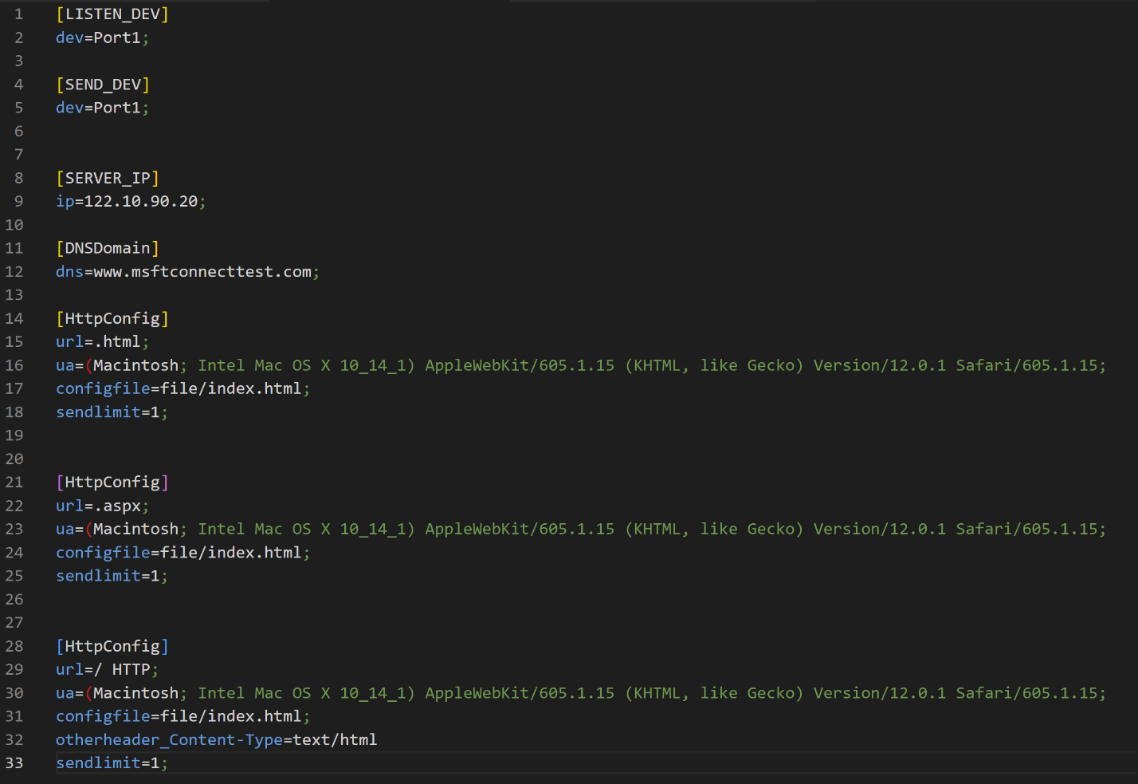目录
- 队列
- 一. 队列的概念及结构
- 二. 队列的实现
- 1. 要实现的功能
- 2 具体的实现
- 2.1 结构体
- 2.2 初始化
- 2.3 入队列
- 2.4 出队列
- 2.5 返回队首元素
- 2.6 返回队尾元素
- 2.7 队列元素个数
- 2.8 队列判空
- 2.9 队列销毁
- 三. 队列相关OJ题
- 设计循环队列
- 用队列实现栈
- 用栈实现队列
- 四. 概念选择题
- 五. 参考代码
- Queue.h
- Queue.c
- test.c
队列
一. 队列的概念及结构
队列:只允许在一端进行插入数据操作,在另一端进行删除数据操作的特殊线性表,队列具有先进先出FIFO(First In First Out)
入队列:进行插入操作的一端称为队尾
出队列:进行删除操作的一端称为队头

二. 队列的实现
队列也可以数组和链表的结构实现,使用链表的结构实现更优一些,因为如果使用数组的结构,出队列在数组头上出数据,效率会比较低。

1. 要实现的功能
// 链式结构:表示队列
typedef struct QListNode
{
struct QListNode* _pNext;
QDataType _data;
}QNode;
// 队列的结构
typedef struct Queue
{
QNode* _front;
QNode* _rear;
}Queue;
// 初始化队列
void QueueInit(Queue* q);
// 队尾入队列
void QueuePush(Queue* q, QDataType data);
// 队头出队列
void QueuePop(Queue* q);
// 获取队列头部元素
QDataType QueueFront(Queue* q);
// 获取队列队尾元素
QDataType QueueBack(Queue* q);
// 获取队列中有效元素个数
int QueueSize(Queue* q);
// 检测队列是否为空,如果为空返回非零结果,如果非空返回0
int QueueEmpty(Queue* q);
// 销毁队列
void QueueDestroy(Queue* q);
另外扩展了解一下,实际中我们有时还会使用一种队列叫循环队列。如操作系统课程讲解生产者消费者模型时可以就会使用循环队列。环形队列可以使用数组实现,也可以使用循环链表实现。

2 具体的实现
本次队列的实现我们基于双向链表。
2.1 结构体
为了适配多种数据类型,这里使用typedef对数据类型进行重命名,便于进行统一修改。
由于链表QueueNode的节点只含有next指针和值,所以我们额外定义一个结构体Queue记录下链表的头和尾,便于快速进行相关操作。
typedef int QDataType;
typedef struct QueueNode
{
struct QueueNode* next;
QDataType val;
}QNode;
typedef struct Queue
{
QNode* phead;
QNode* ptail;
int size;
}Queue;
2.2 初始化
初始化将记录的头和尾置空,元素个数置空
void QueueInit(Queue* pq)
{
assert(pq);
pq->phead = NULL;
pq->ptail = NULL;
pq->size = 0;
}
2.3 入队列
入队列创建一个新节点,并放在记录好的尾节点的位置之后,成为新的尾节点,最后元素个数增加。
void QueuePush(Queue* pq, QDataType x)
{
QNode* newnode = (QNode*)malloc(sizeof(QNode));
if (newnode == NULL)
{
perror("malloc failed");
exit(1);
}
newnode->next = NULL;
newnode->val = x;
if (pq->ptail == NULL)
{
pq->phead = newnode;
pq->ptail = newnode;
}
else
{
pq->ptail->next = newnode;
pq->ptail = newnode;
}
pq->size++;
}
2.4 出队列
出队列释放掉第一个节点(头节点),然后让第二个节点成为新的头节点,最后元素个数减少。
void QueuePop(Queue* pq)
{
assert(pq);
assert(pq->size);
QNode* next = pq->phead->next;
free(pq->phead);
pq->phead = next;
if (pq->phead == NULL)//just one node
{
pq->ptail = NULL;
}
pq->size--;
}
2.5 返回队首元素
返回我们记录的头节点的值即可。
QDataType QueueFront(Queue* pq)
{
assert(pq);
assert(pq->phead);
return pq->phead->val;
}
2.6 返回队尾元素
返回我们记录的尾节点的值即可。
QDataType QueueBack(Queue* pq)
{
assert(pq);
assert(pq->ptail);
return pq->ptail->val;
}
2.7 队列元素个数
返回我们记录的元素个数即可。
int QueueSize(Queue* pq)
{
assert(pq);
return pq->size;
}
2.8 队列判空
返回我们记录的元素个数是否为零。
_Bool QueueEmpty(Queue* pq)
{
assert(pq);
return pq->size == 0;
}
2.9 队列销毁
类似于单链表的销毁,依次销毁每一个节点后将头尾置空,将元素个数置空。
void QueueDestroy(Queue* pq)
{
assert(pq);
QNode* pcur = pq->phead;
while (pcur)
{
QNode* next = pcur->next;
free(pcur);
pcur = next;
}
pq->phead = NULL;
pq->ptail = NULL;
pq->size = 0;
}
三. 队列相关OJ题
设计循环队列
题目链接:设计循环队列

//顺序表
typedef struct
{
int* a;
int head;
int tail;
int k;
} MyCircularQueue;
bool myCircularQueueIsEmpty(MyCircularQueue* obj);
bool myCircularQueueIsFull(MyCircularQueue* obj);
MyCircularQueue* myCircularQueueCreate(int k)
{
MyCircularQueue* pq = (MyCircularQueue*)malloc(sizeof(MyCircularQueue));
//多开辟一个空间解决假溢出问题
pq->a = malloc(sizeof(int) * (k + 1));
pq->head = 0;
pq->tail = 0;
pq->k = k;
return pq;
}
bool myCircularQueueEnQueue(MyCircularQueue* obj, int value)
{
if(myCircularQueueIsFull(obj))
{
return false;
}
obj->a[obj->tail] = value;
obj->tail++;
obj->tail %= (obj->k + 1);
return true;
}
bool myCircularQueueDeQueue(MyCircularQueue* obj)
{
if(myCircularQueueIsEmpty(obj))
{
return false;
}
obj->head++;
obj->head %= obj->k + 1;
return true;
}
int myCircularQueueFront(MyCircularQueue* obj)
{
if(myCircularQueueIsEmpty(obj))
{
return EOF;
}
else
{
return obj->a[obj->head];
}
}
int myCircularQueueRear(MyCircularQueue* obj)
{
if(myCircularQueueIsEmpty(obj))
{
return EOF;
}
else
{
//return obj->tail == 0 ? obj->a[obj->k] : obj->a[obj->tail - 1];
//return obj->a[(obj->tail - 1 + obj->k + 1) % (obj->k + 1)];
return obj->a[(obj->tail + obj->k) % (obj->k + 1)];
}
}
bool myCircularQueueIsEmpty(MyCircularQueue* obj)
{
return obj->head == obj->tail;
}
bool myCircularQueueIsFull(MyCircularQueue* obj)
{
return (obj->tail + 1) % (obj->k + 1) == obj->head;
}
void myCircularQueueFree(MyCircularQueue* obj)
{
free(obj->a);
free(obj);
}
/**
* Your MyCircularQueue struct will be instantiated and called as such:
* MyCircularQueue* obj = myCircularQueueCreate(k);
* bool param_1 = myCircularQueueEnQueue(obj, value);
* bool param_2 = myCircularQueueDeQueue(obj);
* int param_3 = myCircularQueueFront(obj);
* int param_4 = myCircularQueueRear(obj);
* bool param_5 = myCircularQueueIsEmpty(obj);
* bool param_6 = myCircularQueueIsFull(obj);
* myCircularQueueFree(obj);
*/
用队列实现栈
题目链接:用队列实现栈
typedef int QDataType;
typedef struct QueueNode
{
struct QueueNode* next;
QDataType val;
}QNode;
typedef struct Queue
{
QNode* phead;
QNode* ptail;
int size;
}Queue;
队尾插入
//void QueuePush(QNode** pphead, QNode** pptail, QDataType x);
//
队头删除
//void QueuePop(QNode** pphead, QNode** pptail);
//初始化
void QueueInit(Queue* pq);
//队尾插入
void QueuePush(Queue* pq, QDataType x);
//队头删除
void QueuePop(Queue* pq);
//取队头数据
QDataType QueueFront(Queue* pq);
//取队尾数据
QDataType QueueBack(Queue* pq);
//队列元素个数
int QueueSize(Queue* pq);
//判空
_Bool QueueEmpty(Queue* pq);
//队列的销毁
void QueueDestroy(Queue* pq);
void QueueInit(Queue* pq)
{
assert(pq);
pq->phead = NULL;
pq->ptail = NULL;
pq->size = 0;
}
void QueuePush(Queue* pq, QDataType x)
{
QNode* newnode = (QNode*)malloc(sizeof(QNode));
if (newnode == NULL)
{
perror("malloc failed");
exit(1);
}
newnode->next = NULL;
newnode->val = x;
if (pq->ptail == NULL)
{
pq->phead = newnode;
pq->ptail = newnode;
}
else
{
pq->ptail->next = newnode;
pq->ptail = newnode;
}
pq->size++;
}
void QueuePop(Queue* pq)
{
assert(pq);
assert(pq->size);
QNode* next = pq->phead->next;
free(pq->phead);
pq->phead = next;
if (pq->phead == NULL)
{
pq->ptail = NULL;
}
pq->size--;
}
QDataType QueueFront(Queue* pq)
{
assert(pq);
assert(pq->phead);
return pq->phead->val;
}
QDataType QueueBack(Queue* pq)
{
assert(pq);
assert(pq->ptail);
return pq->ptail->val;
}
int QueueSize(Queue* pq)
{
assert(pq);
return pq->size;
}
_Bool QueueEmpty(Queue* pq)
{
assert(pq);
return pq->size == 0;
}
void QueueDestroy(Queue* pq)
{
assert(pq);
QNode* pcur = pq->phead;
while (pcur)
{
QNode* next = pcur->next;
free(pcur);
pcur = next;
}
pq->phead = NULL;
pq->ptail = NULL;
pq->size = 0;
}
typedef struct {
Queue q1;
Queue q2;
} MyStack;
MyStack* myStackCreate()
{
MyStack* pst = (MyStack*)malloc(sizeof(MyStack));
if(pst == NULL)
{
perror("malloc failed");
exit(1);
}
QueueInit(&pst->q1);
QueueInit(&pst->q2);
return pst;
}
void myStackPush(MyStack* obj, int x)
{
if(!QueueEmpty(&(obj->q1)))
{
QueuePush(&(obj->q1), x);
}
else
{
QueuePush(&(obj->q2), x);
}
}
int myStackPop(MyStack* obj)
{
//如果队列不为空,就把前size - 1个数据放在另一个队列中,释放最后一个节点的数据
Queue* emp = &(obj->q1);//假设q1为空
Queue* noemp = &(obj->q2);
if(QueueEmpty(&(obj->q2)))//如果q2为空
{
emp = &(obj->q2);
noemp = &(obj->q1);
}
int sz = QueueSize(noemp);
while(sz > 1)
{
QueuePush(emp, QueueFront(noemp));
QueuePop(noemp);
sz--;
}
int top = QueueFront(noemp);
QueuePop(noemp);
return top;
}
int myStackTop(MyStack* obj)
{
if(!QueueEmpty(&(obj->q1)))
{
return QueueBack(&(obj->q1));
}
else
{
return QueueBack(&(obj->q2));
}
}
bool myStackEmpty(MyStack* obj)
{
return QueueEmpty(&(obj->q1)) && QueueEmpty(&(obj->q2));
}
void myStackFree(MyStack* obj)
{
QueueDestroy(&obj->q1);
QueueDestroy(&obj->q2);
free(obj);
}
/**
* Your MyStack struct will be instantiated and called as such:
* MyStack* obj = myStackCreate();
* myStackPush(obj, x);
* int param_2 = myStackPop(obj);
* int param_3 = myStackTop(obj);
* bool param_4 = myStackEmpty(obj);
* myStackFree(obj);
*/
用栈实现队列
题目链接:用栈实现队列

typedef int STDataType;
typedef struct Stack
{
STDataType* a;
int top;
int capacity;
}ST;
//初始化
void STInit(ST* pst);
//销毁
void STDestroy(ST* pst);
//插入数据(入栈)
void STPush(ST* pst, STDataType x);
//删除数据(出栈)
void STPop(ST* pst);
//获取栈顶数据
STDataType STTop(ST* pst);
//判空
_Bool STEmpty(ST* pst);
//获取数据个数
int STSize(ST* pst);
void STInit(ST* pst)
{
assert(pst);
pst->a = NULL;
pst->capacity = 0;
// top指向栈顶数据的下一个位置
pst->top = 0;
top指向栈顶数据
//pst->top = -1;
}
void STDestroy(ST* pst)
{
assert(pst);
free(pst->a);
pst->a = NULL;
pst->capacity = 0;
pst->top = 0;
}
void STPush(ST* pst, STDataType x)
{
assert(pst);
//扩容
if (pst->top == pst->capacity)
{
int newcapacity = (pst->capacity == 0) ? 4 : (2 * pst->capacity);
STDataType* tmp = (STDataType*)realloc(pst->a, newcapacity * sizeof(STDataType));
if (tmp == NULL)
{
perror("realloc failed");
exit(1);
}
pst->a = tmp;
pst->capacity = newcapacity;
}
//存放数据
pst->a[pst->top] = x;
pst->top++;
}
void STPop(ST* pst)
{
assert(pst);
assert(pst->top > 0);
pst->top--;
}
STDataType STTop(ST* pst)
{
assert(pst);
assert(pst->top > 0);
return pst->a[pst->top - 1];
}
_Bool STEmpty(ST* pst)
{
assert(pst);
return pst->top == 0;
}
int STSize(ST* pst)
{
assert(pst);
return pst->top;
}
typedef struct
{
ST s1;
ST s2;
} MyQueue;
MyQueue* myQueueCreate()
{
MyQueue* pqe = (MyQueue*)malloc(sizeof(MyQueue));
if(pqe == NULL)
{
perror("malloc failed");
exit(1);
}
STInit(&(pqe->s1));
STInit(&(pqe->s2));
return pqe;
}
void myQueuePush(MyQueue* obj, int x)
{
if(!STEmpty(&(obj->s1)))
{
STPush(&(obj->s1), x);
}
else
{
STPush(&(obj->s2), x);
}
}
int myQueuePop(MyQueue* obj)
{
ST* emp = &(obj->s1);//假设s1为空
ST* noemp = &(obj->s2);
if (STEmpty(&(obj->s2)))//如果s2为空
{
emp = &(obj->s2);
noemp = &(obj->s1);
}
int sz = STSize(noemp);
if (sz == 1)
{
int top = STTop(noemp);
STPop(noemp);
return top;
}
else
{
while (sz > 1)
{
STPush(emp, STTop(noemp));
STPop(noemp);
sz--;
}
int top = STTop(noemp);
STPop(noemp);
ST* tmp = noemp;
noemp = emp;
emp = tmp;
sz = STSize(noemp);
while (sz > 0)
{
STPush(emp, STTop(noemp));
STPop(noemp);
sz--;
}
return top;
}
}
int myQueuePeek(MyQueue* obj)
{
ST* emp = &(obj->s1);//假设s1为空
ST* noemp = &(obj->s2);
if (STEmpty(&(obj->s2)))//如果s2为空
{
emp = &(obj->s2);
noemp = &(obj->s1);
}
int sz = STSize(noemp);
if (sz == 1)
{
int top = STTop(noemp);
return top;
}
else
{
while (sz > 1)
{
STPush(emp, STTop(noemp));
STPop(noemp);
sz--;
}
int top = STTop(noemp);
STPush(emp, STTop(noemp));
STPop(noemp);
ST* tmp = noemp;
noemp = emp;
emp = tmp;
sz = STSize(noemp);
while (sz > 0)
{
STPush(emp, STTop(noemp));
STPop(noemp);
sz--;
}
return top;
}
}
bool myQueueEmpty(MyQueue* obj)
{
return STEmpty(&obj->s1) && STEmpty(&obj->s2);
}
void myQueueFree(MyQueue* obj)
{
STDestroy(&obj->s1);
STDestroy(&obj->s2);
free(obj);
}
/**
* Your MyQueue struct will be instantiated and called as such:
* MyQueue* obj = myQueueCreate();
* myQueuePush(obj, x);
* int param_2 = myQueuePop(obj);
* int param_3 = myQueuePeek(obj);
* bool param_4 = myQueueEmpty(obj);
* myQueueFree(obj);
*/
四. 概念选择题
- 循环队列的存储空间为 Q(1:100) ,初始状态为front=rear=100 。经过一系列正常的入队与退队操作后, front=rear=99 ,则循环队列中的元素个数为( )
A 1
B 2
C 99
D 0或者100 - 以下( )不是队列的基本运算?
A 从队尾插入一个新元素
B 从队列中删除第i个元素
C 判断一个队列是否为空
D 读取队头元素的值 - 现有一循环队列,其队头指针为front,队尾指针为rear;循环队列长度为N。其队内有效长度为?(假设队头不存放数据)
A (rear - front + N) % N + 1
B (rear - front + N) % N
C ear - front) % (N + 1)
D (rear - front + N) % (N - 1)
答案 - D
- B
- B
五. 参考代码
Queue.h
#pragma once
#include <stdio.h>
#include <stdlib.h>
#include <assert.h>
#include <stdbool.h>
typedef int QDataType;
typedef struct QueueNode
{
struct QueueNode* next;
QDataType val;
}QNode;
typedef struct Queue
{
QNode* phead;
QNode* ptail;
int size;
}Queue;
队尾插入
//void QueuePush(QNode** pphead, QNode** pptail, QDataType x);
//
队头删除
//void QueuePop(QNode** pphead, QNode** pptail);
//初始化
void QueueInit(Queue* pq);
//队尾插入
void QueuePush(Queue* pq, QDataType x);
//队头删除
void QueuePop(Queue* pq);
//取队头数据
QDataType QueueFront(Queue* pq);
//取队尾数据
QDataType QueueBack(Queue* pq);
//队列元素个数
int QueueSize(Queue* pq);
//判空
_Bool QueueEmpty(Queue* pq);
//队列的销毁
void QueueDestroy(Queue* pq);
Queue.c
#include "Queue.h"
void QueueInit(Queue* pq)
{
assert(pq);
pq->phead = NULL;
pq->ptail = NULL;
pq->size = 0;
}
void QueuePush(Queue* pq, QDataType x)
{
QNode* newnode = (QNode*)malloc(sizeof(QNode));
if (newnode == NULL)
{
perror("malloc failed");
exit(1);
}
newnode->next = NULL;
newnode->val = x;
if (pq->ptail == NULL)
{
pq->phead = newnode;
pq->ptail = newnode;
}
else
{
pq->ptail->next = newnode;
pq->ptail = newnode;
}
pq->size++;
}
void QueuePop(Queue* pq)
{
assert(pq);
assert(pq->size);
QNode* next = pq->phead->next;
free(pq->phead);
pq->phead = next;
if (pq->phead == NULL)//just one node
{
pq->ptail = NULL;
}
pq->size--;
}
QDataType QueueFront(Queue* pq)
{
assert(pq);
assert(pq->phead);
return pq->phead->val;
}
QDataType QueueBack(Queue* pq)
{
assert(pq);
assert(pq->ptail);
return pq->ptail->val;
}
int QueueSize(Queue* pq)
{
assert(pq);
return pq->size;
}
_Bool QueueEmpty(Queue* pq)
{
assert(pq);
return pq->size == 0;
}
void QueueDestroy(Queue* pq)
{
assert(pq);
QNode* pcur = pq->phead;
while (pcur)
{
QNode* next = pcur->next;
free(pcur);
pcur = next;
}
pq->phead = NULL;
pq->ptail = NULL;
pq->size = 0;
}
test.c
#include "Queue.h"
int main()
{
Queue q;
QueueInit(&q);
QueuePush(&q, 1);
QueuePush(&q, 2);
QueuePush(&q, 3);
QueuePush(&q, 4);
QueuePush(&q, 5);
while (!QueueEmpty(&q))
{
printf("%d ", QueueFront(&q));
QueuePop(&q);
}
return 0;
}



















